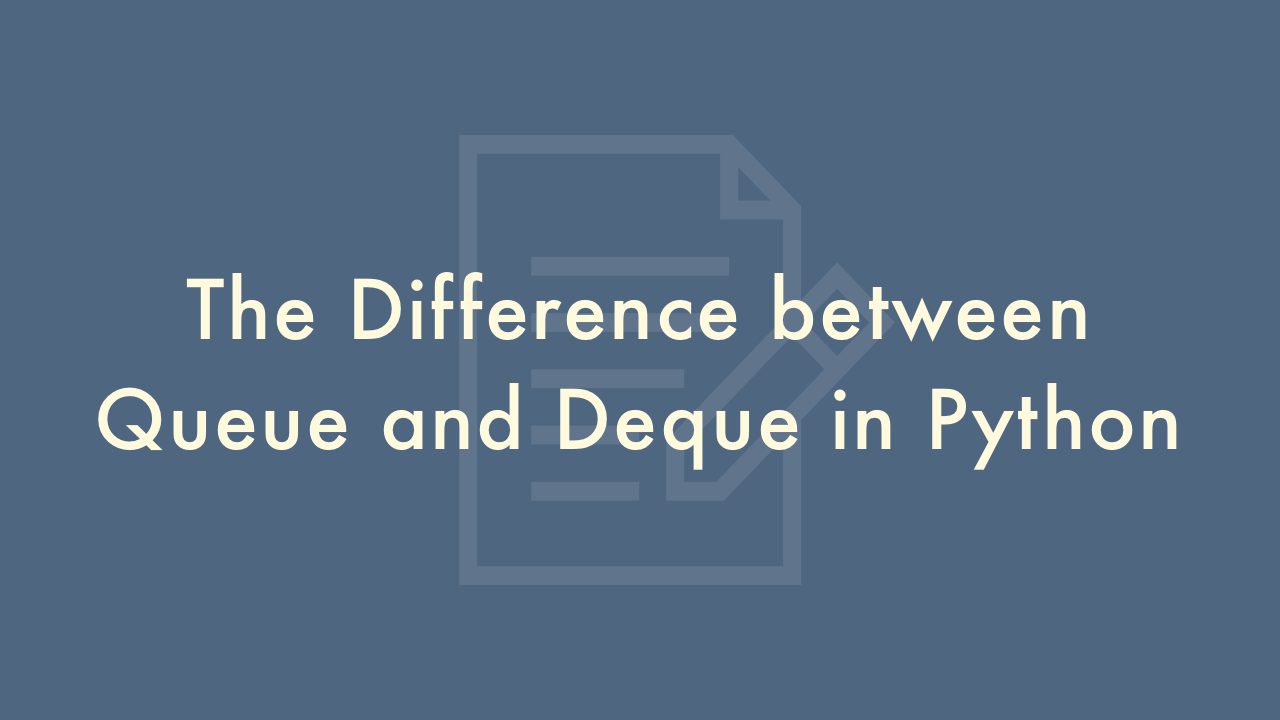The Difference between Queue and Deque in Python

Contents
In this article, you will learn about the difference between queue and deque in Python.
The difference between queue and deque
Both queue and deque are Python collections used for storing and managing data. However, they have different characteristics and intended uses.
A queueis a collection of elements that are maintained in a sequence and can be accessed in a first-in, first-out (FIFO) order. This means that the element that is added first to the queue is the first one to be removed. In Python, queue is implemented as a module that provides a Queue class. This class offers methods for adding elements to the queue (put), removing elements from the queue (get), and checking the size of the queue (qsize).
A deque(short for “double-ended queue”) is similar to a queue in that it is a collection of elements that can be accessed in a specific order. However, a deque allows elements to be added and removed from both ends of the collection, rather than just one end as in a queue. This makes deque a more flexible collection than a queue. In Python, deque is implemented as a module that provides a deque class. This class offers methods for adding elements to the left end (appendleft) or right end (append), removing elements from the left end (popleft) or right end (pop), and checking the size of the deque (len).
To summarize, a queue is a simple collection of elements that follows a strict FIFO order, while a deque is a more flexible collection that allows elements to be added and removed from both ends. Depending on your needs, you may choose to use one or the other.